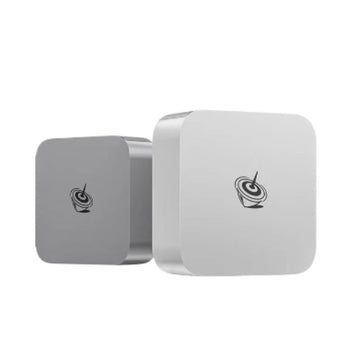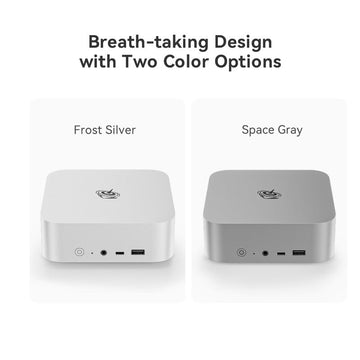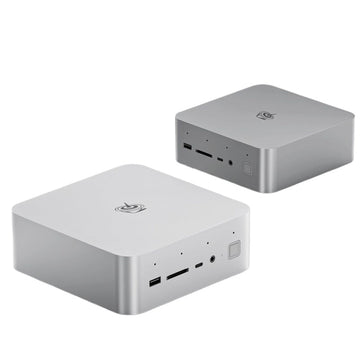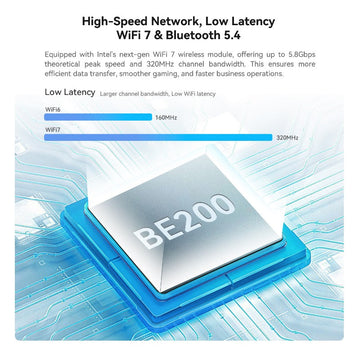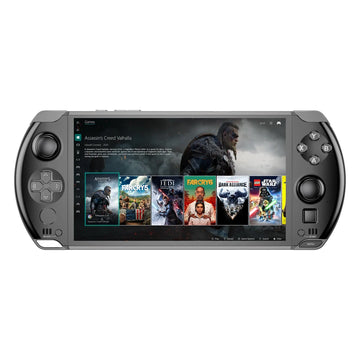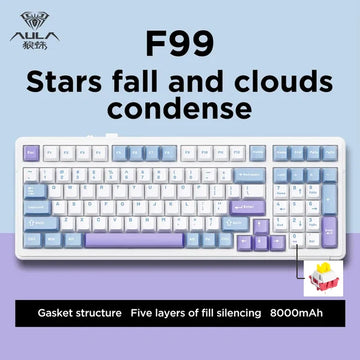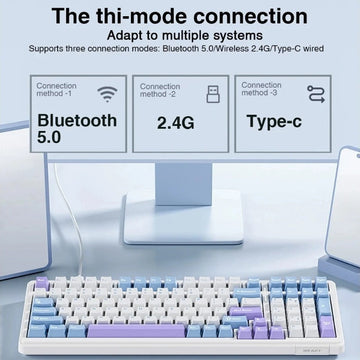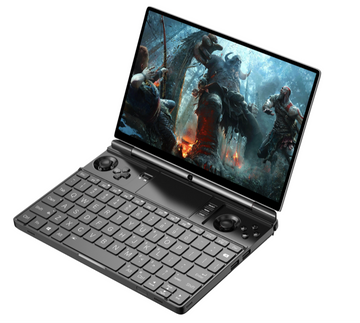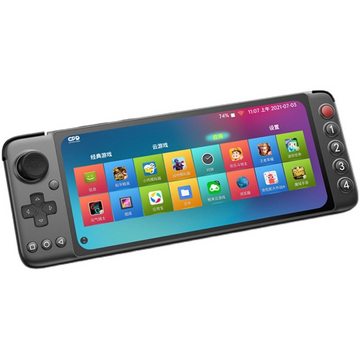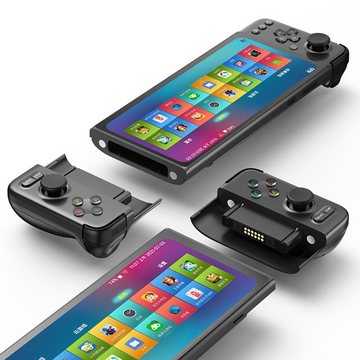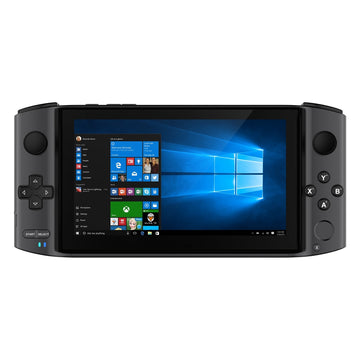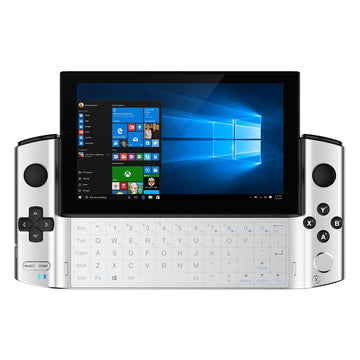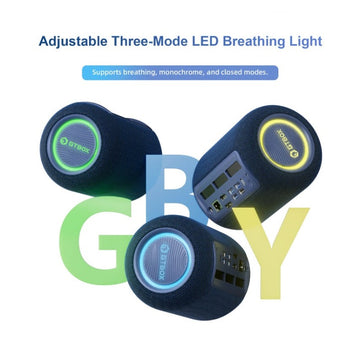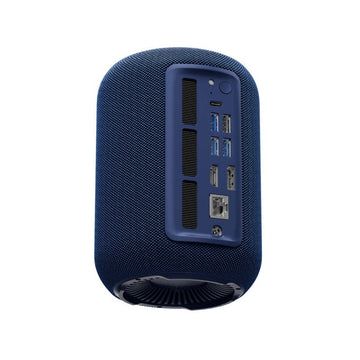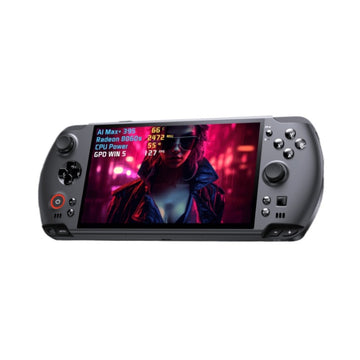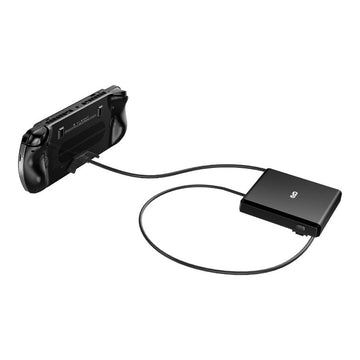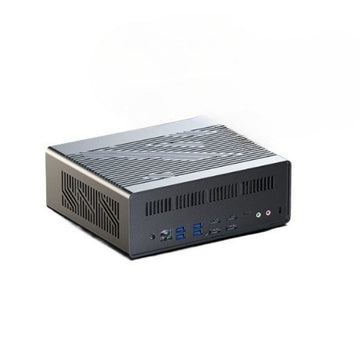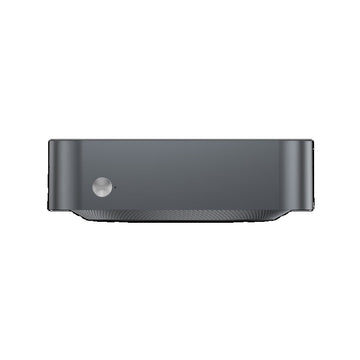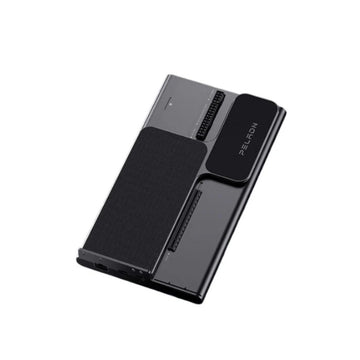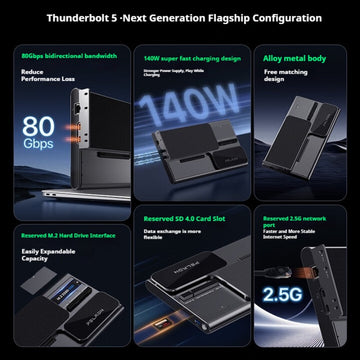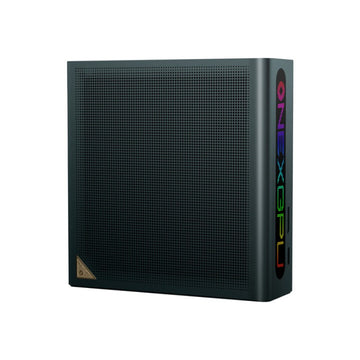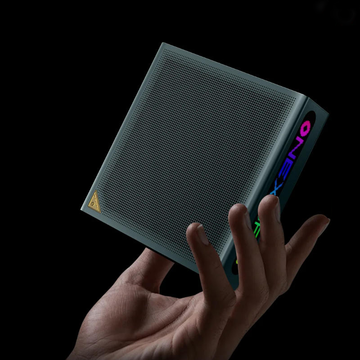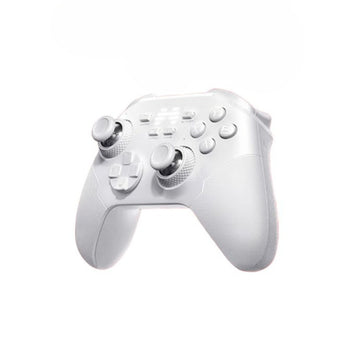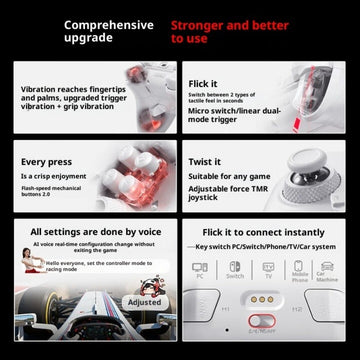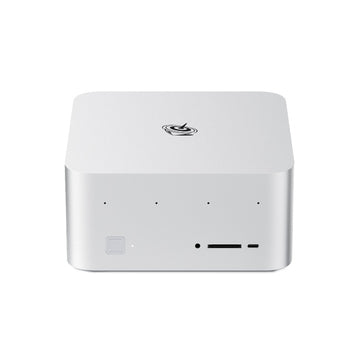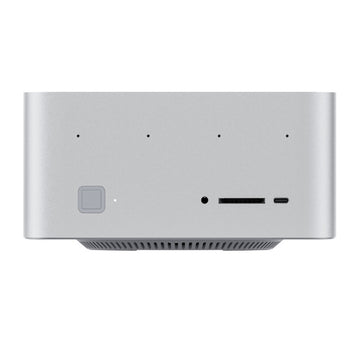AYN Odin Lite Android Handheld Review - Worth the Price or Not?
At the beginning of the year, I first tested the Android handheld from AYN - Odin Base (Odin basic version, Snapdragon 845 4GB+64GB, WiFi), and after half a year, it was scheduled for nearly a year (September 21, 100 deposit) Odin Lite (Dimensity D900, 4GB+64GB, 4G + WiFi) is finally available. This article is not to discuss whether the Android handheld is necessary or has sufficient cost performance. After all, mobile phone + stretch handle, tablet + wireless handle are better than Android handheld in terms of cost performance and performance. If you are not interested, please click the X in the upper right corner or close this article.
For me personally, why choose an Android handheld that doesn't seem cost-effective? I think the reasons are as follows:
- Independent device, no need to interfere with WeChat, telephone, etc.
- Pick up and use, no need to combine the phone with the handle every time, and charge the handle separately
- 16:9 aspect ratio, less black borders when playing emulator games (now mobile phones, 21:9 playing emulators will have huge black borders on the left and right sides)
- The independent fan has stronger heat dissipation, and the large battery does not need to worry about the power problem (after all, the importance of mobile phones is self-evident now, and it will be very troublesome to play games and cause the mobile phone to run out of power)
Design
Although AYN Odin Lite has the Lite suffix, the appearance is exactly the same as the standard version of Odin (Base/Pro Qualcomm version), but the optional colors are currently less than the Qualcomm version, only black, gray, transparent white, transparent Available in black and four colors. Since I previously crowdfunded the black Odin Base, this time I chose the gray version for a change.
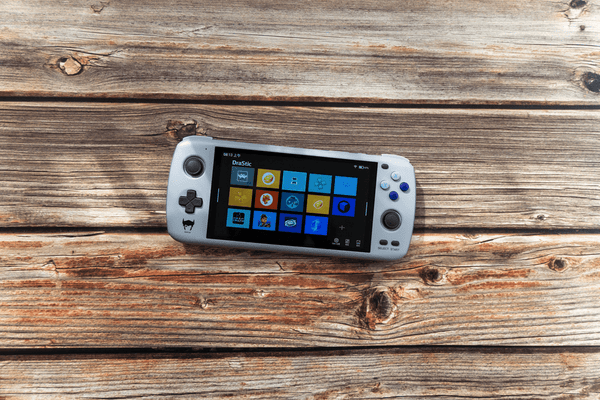
The front is a 5.98-inch FHD (1920X1080) resolution IPS screen, and the left side of the screen is the microphone, left joystick (including L3), cross keys and Odin LOGO from top to bottom. From top to bottom on the right are the Home key, ABXY, right joystick (including R3), Select and Start keys.
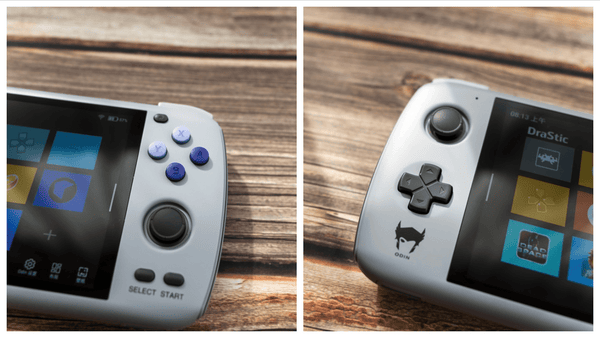
The joystick feels pretty good. The ABXY buttons use lavender/purple color matching. However, the ABXY buttons have a slightly longer keystroke and are hard. Personally, I like the slightly softer feel of the PS4 handle buttons.
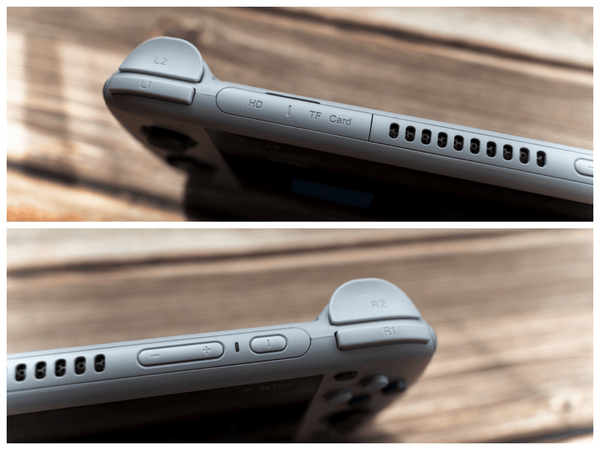
A complete L1/L2/R1/R2 is placed on the side, and L2/R2 supports both digital and analog modes, which can well support racing games. Below the top cover is the Micro HDMI interface and TF+SIM card slot. When using the Micro HDMI interface, it can output 1080P/720P images.
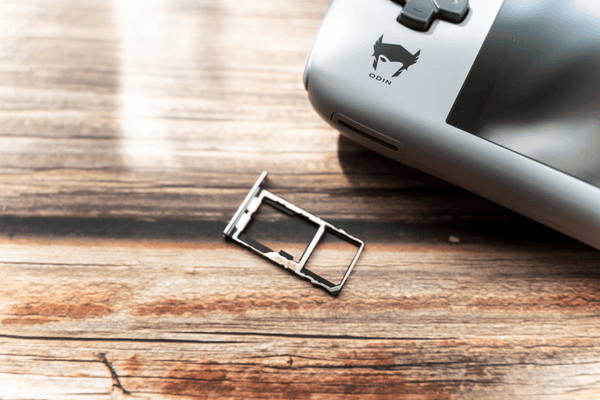
The TF card slot can be used for external expansion cards. normal call).

In addition to heat dissipation and speaker openings on the back, there are two additional customizable buttons M1 and M2, which are very convenient for emulators and streaming games.

The joystick and grip part are also equipped with blue lights, which are good as the appearance of the handheld, and the system also provides options to turn it on and off. However, monochrome (blue) may not satisfy all users' preferences. In the future, we hope to consider upgrading to a customizable color version.
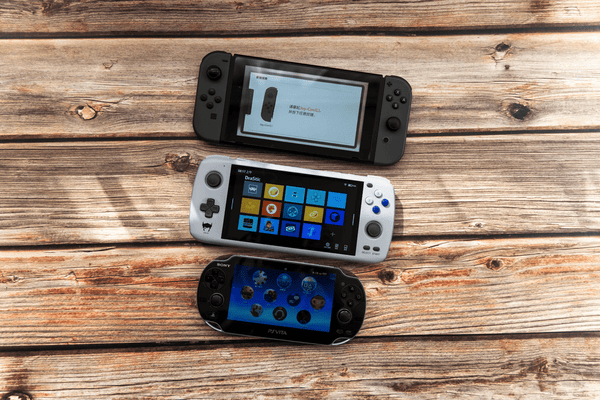
The size of the Odin Lite is exactly the same as the Qualcomm version (Odin Base/Pro). The size is between NS and NSL. Since I don't have NSL on hand, I will use PSV as a small-screen handheld to compare the size.
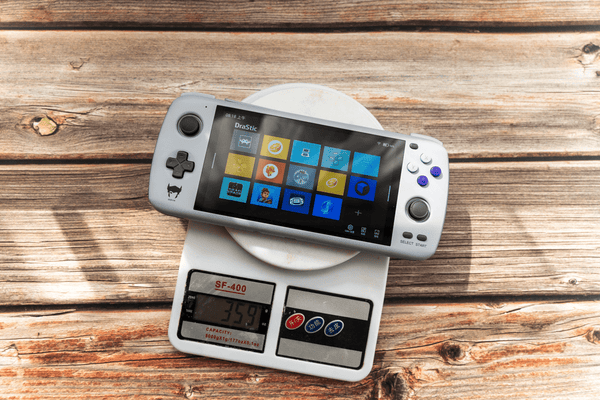
In terms of weight, the measured Odin Lite 4GB+64GB gray version (without tempered film) is 359 grams, and the previous measurement of Odin Base (4GB+64GB) black version with tempered film is 368 grams. The weight part of Lite is not much more than Base/Pro Lite.
Disassembly
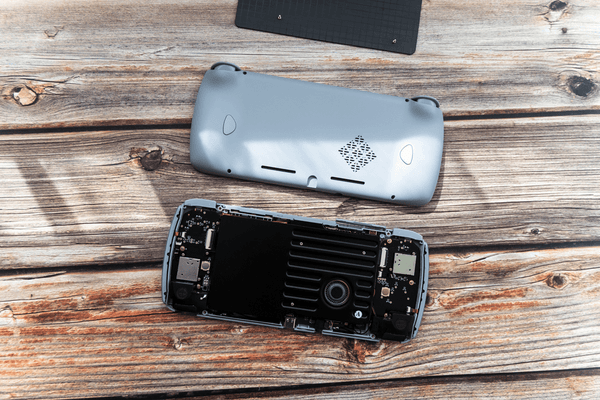
Since the Dimensity 900 supported by the 6nm process is a relatively low-heat SOC, many users doubt whether the Lite version will shrink in terms of heat dissipation. The previous Takiudon dismantling was also an early engineering machine. This question can only be verified by disassembling it by yourself.

Take out the TF+SIM card slot, unscrew the four screws on the back, and use the plastic tabs to gently pry open the back cover along the sides. It can be seen that the heat dissipation part is still a thin fan + large-area aluminum sheet, and the heat dissipation configuration is exactly the same as that of the Odin Base/Pro. However, from an engineering point of view, the effect of heat pipe + copper heat sink will be better. When upgrading products with stronger performance in the future, I hope AYN can strengthen the heat dissipation configuration.
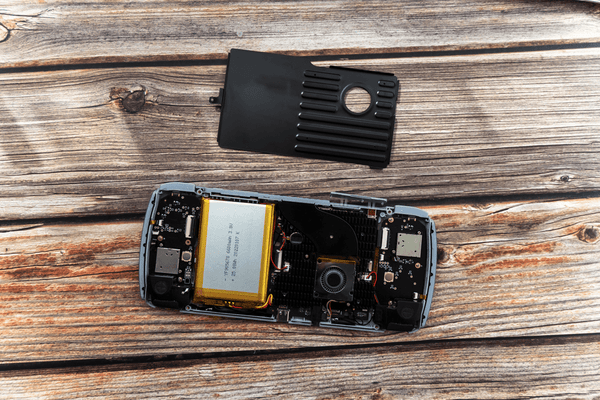
 In terms of PCB, a black PCB with higher appearance is selected. The overall layout and wiring are relatively neat, and the key board and joystick are also designed separately. It is also more convenient for subsequent maintenance and replacement of accessories.
In terms of PCB, a black PCB with higher appearance is selected. The overall layout and wiring are relatively neat, and the key board and joystick are also designed separately. It is also more convenient for subsequent maintenance and replacement of accessories.
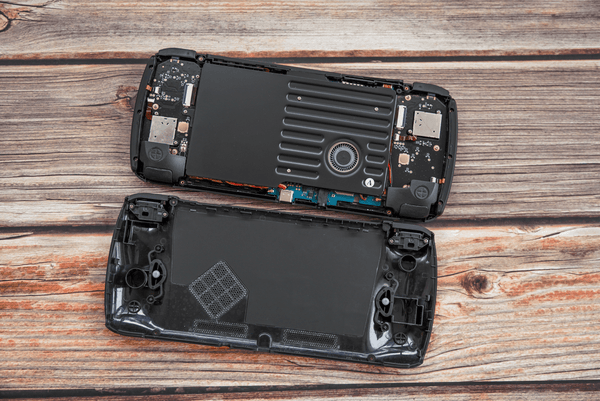
The previously disassembled Odin Base Qualcomm version
What can you play on an Android handheld?
Personally, I think it can be basically divided into three categories. It goes without saying that Android native games, such as Horn of the Sea, natively support gamepads. For games such as Genshin Impact that does not support the handle (but the PC side of this product supports the handle), Peace Elite and other games, you can also use the screen mapping software that comes with Odin to play. Of course, because some Android games are deeply adapted to touch, some operations cannot be realized by screen mapping (such as many MOBA mobile games), so these kinds of games are not suitable for Android handhelds.
Android game
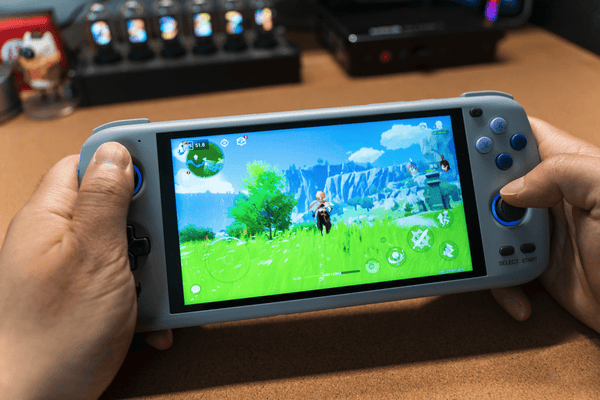
In addition to playing native Android games, emulators are the easiest thing for many friends to think of. As a low-power handheld terminal, it is really good to run retro games on Android. From retro FC, GB, SNES, to N64, NGC, Wii, PS1, SS, NDS, DC, PSP, and even many PS2 and some NS games can already run on Android.
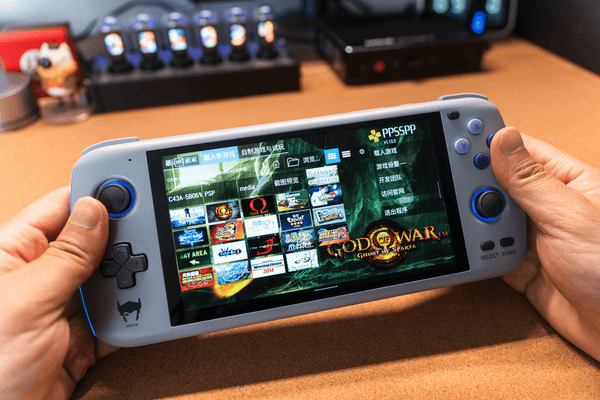
PSP Simulator PPSSPP
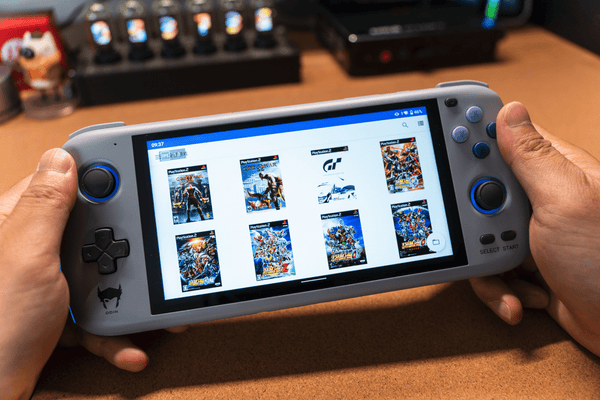
PS2 emulator AetherSX2
Streaming Assassin's Creed Odyssey on PC
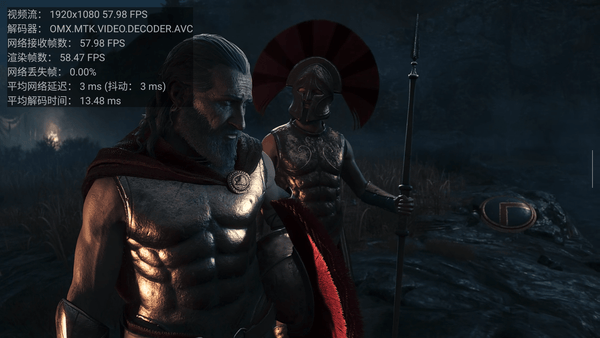
Of course, the gameplay of Android machines does not stop there. Thanks to streaming (PC, PS4/PS5, Xbox) and cloud games, it is also a good choice to play 3A masterpieces with Android handhelds. Especially considering the high price, low battery life and weight of the Win handheld, in a suitable network environment, the experience of using an Android machine to stream 3A is also good.
Performance Test
Odin Lite adopts MediaTek (MTK) Dimensity 900 SOC, TSMC 6nm process, 2 core 2.4Ghz A78 large core + 6 core 2.0Ghz A55 small core, and the GPU part is Mali-G68 MC4. In terms of configuration, AYN provides two configurations of 4GB LPDDR4x + 64GB UFS2.1, 6GB LPDDR4x + 128GB UFS2.1, and the screen part uses a 5.98-inch IPS LCD with a resolution of 1080X1920. Due to the limitation of the Dimensity 900, the interface part cannot use USB-C for direct video output. The body has a built-in Micro HDMI (1080p/720p optional) interface for connecting to an external monitor/TV. The audio part uses 2X1W speakers, supports Bluetooth 5.2, WiFi6, 4G network connection, the battery part is 6600mAh, and the factory is equipped with Android 11.0 system.
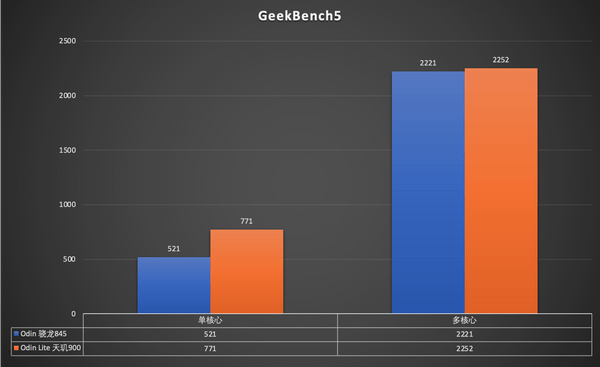
In terms of CPU performance, the Odin Lite Dimensity 900 scored 771 in single-core and 2252 in multi-core, surpassing the Snapdragon 845 version with the support of the manufacturing process and the updated large core. This Lite is really not a Lite.
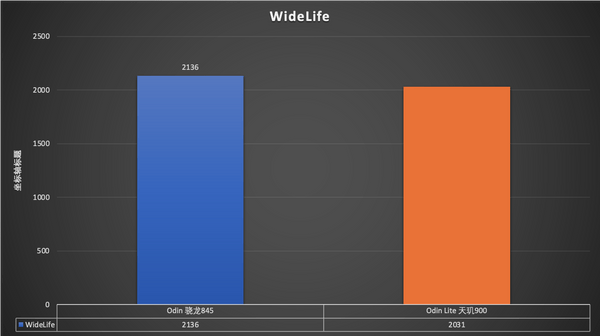
In terms of GPU, the 3DMark Wide Life Dimensity 900 scored 2031, slightly weaker than the 845.
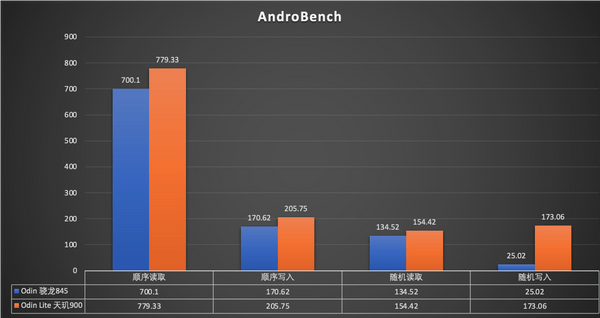
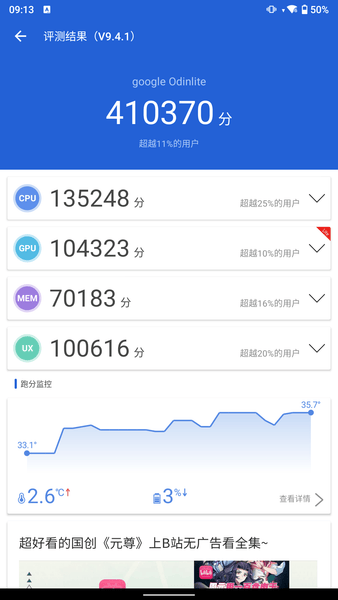
For the storage part, AndroBench tested the Dimensity 900 book sequence read 779.33MB/s, sequential write 205.75MB/s, random read 154.42MB/s, random write 173.06MB/s, the overall I/O part compared to Snapdragon The 845 version is slightly stronger.

In the stress test part of 3DMark Wild Life, because Odin Lite is equipped with active heat dissipation, coupled with the good power consumption performance of the 6nm process, the stability of the stress test under full blood output is as high as 99.6%.
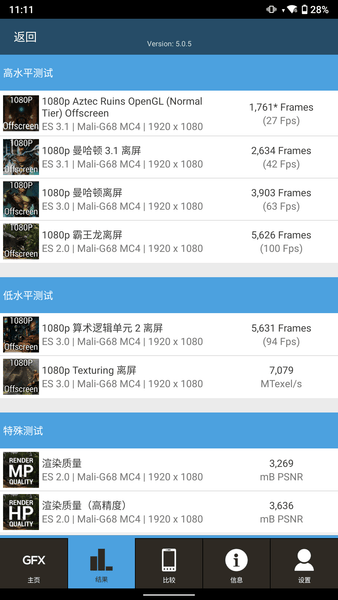
GPU part, using GFXBench test, 1080P Aztec OpenGL ES3.1 off-screen test 1761Frames (27FPS), 1080P Manhattan ES3.1 off-screen test 2634Frames (42FPS), 1080P Manhattan ES3.0 off-screen test 3903Frames (63FPS), 1080P T-Rex ES2.0 off-screen test 5626Frames (100FPS).
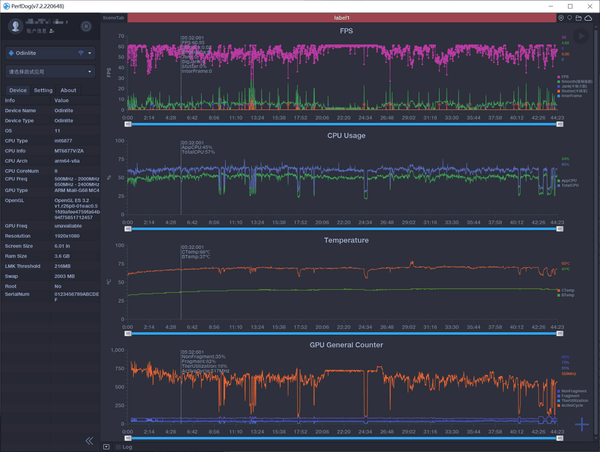
Since the Dimensity 900 is only an entry-level mobile phone SOC, the theoretical performance is actually quite different from the mainstream 870 and Dimensity 1200. The measured average frame rate of Yuanshen with low image quality + 60 frames is more than 50 frames. (This test is a strict real game test, including running the map and fighting monsters, not some in-situ guard tests for the sake of good data).

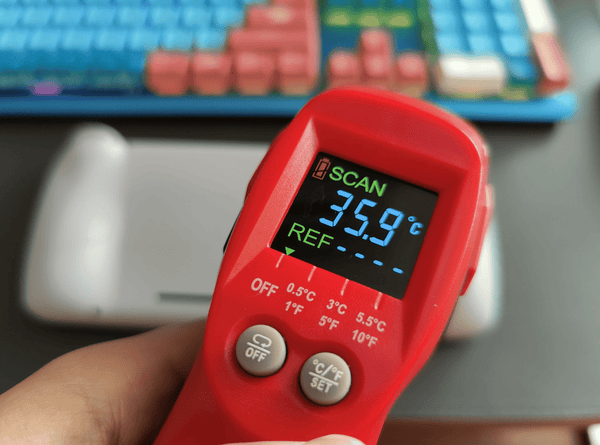 The temperature is partly due to the excellent energy consumption ratio of the Dimensity 900 (as well as the weaker CPU and GPU), as well as the active heat dissipation of Odin. The highest temperature on the front of the fuselage was 33.1 degrees and the highest temperature on the back was also measured at a room temperature of 25 degrees for 30 minutes. Only 35.9 degrees. Compared with the 40+ temperature of mobile phones, the advantages of playing Genshin with a handheld console with active cooling are quite obvious. However, the SOC core temperature reached a maximum of 75 degrees within 45 minutes. Related (although the use of large-area aluminum blocks provides sufficient heat capacity, it is more efficient to use copper heat pipes for SOC locations).
The temperature is partly due to the excellent energy consumption ratio of the Dimensity 900 (as well as the weaker CPU and GPU), as well as the active heat dissipation of Odin. The highest temperature on the front of the fuselage was 33.1 degrees and the highest temperature on the back was also measured at a room temperature of 25 degrees for 30 minutes. Only 35.9 degrees. Compared with the 40+ temperature of mobile phones, the advantages of playing Genshin with a handheld console with active cooling are quite obvious. However, the SOC core temperature reached a maximum of 75 degrees within 45 minutes. Related (although the use of large-area aluminum blocks provides sufficient heat capacity, it is more efficient to use copper heat pipes for SOC locations).
WiFi, 4G, and Streaming Test
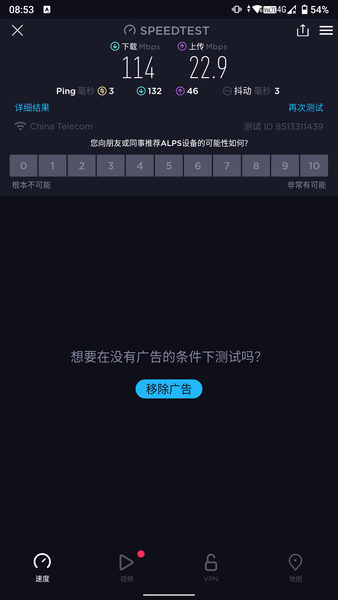
The WiFi part of the Dimensity 900 is a new generation of WiFi6. The actual connection rate of the Redmi AX6 router is 1201Mbps, the downlink rate of the 200M telecom broadband speed measurement is 114Mbps, and the uplink rate is 22.9Mbps.

This time AYN also brought 4G network to Odin Lite, but since this one I have is an initial shipment, the actual 4G antenna is the US version. I thought I couldn't connect to the domestic network, but after inserting the telecom 4G card, I found a normal connection.

The Speed Test tested the downlink rate of 19.6Mbps and the uplink rate of 4.34Mbps. Although the official claim only supports 4G network, the actual test of telecom 4G can make calls normally, I don't know if it is an unexpected surprise. However, the actual domestic shipment is the Asia/Europe version, and the specific telecom, mobile, and China Unicom support depends on the frequency bands supported by the domestic version.

The streaming part uses GTX1070 + LAN WiFi6 (router Redmi AX6) + moonlight. Under the measured 1280X720 20M bit rate, the display time difference between the handheld screen and the monitor is 30~40ms. At 1280X720 20M bit rate, the average network delay is 3ms, the jitter is 1ms, and the average decoding time is 9.37ms. Under the 1920X1080 20M bit rate, the average network delay is 3ms, the jitter is 1ms, and the average decoding time is 11.79ms. Under the 1920X1080 50M bit rate, the average network delay is 3ms, the jitter is 3ms, and the average decoding time is 13.51ms.
Emulator Summary:
- The old platforms such as PSP, PS1, N64, GC, Wii, DC are basically perfect. According to the needs of the picture quality, you can open a higher multiple or use a filter (any GB, SNES, GBA can be opened at N times, needless to say)
- The 3DS is basically smooth, but according to my actual measurement, some games run a little stuck on the TF card, and they need to be placed in the built-in storage to be smoother. Some games have flickering problems, which may be related to the Mali GPU used by Dimensity, and the settings need to be adjusted according to the actual game.
- Most games on PS2 can be played. God of War 1/2 needs to adjust EE (-1/2) to be smoother. Games with low requirements can be run at 2 times.
- I haven't tested the NS simulator, after all, Skyline is still in a relatively early stage, and the performance of Dimensity 900 is not enough (not to mention that this one is currently a 4G RAM version)
Problems Encountered So Far:
The Tianma front-end integration package 2.0, which has been used before, cannot recognize the storage content under Android 11, and it still cannot be recognized by manually modifying the configuration file.
Our Verdict
As an IGG crowdfunding product, it took five months from the pre-order of $15 deposit in September 21 to get the Qualcomm version (Base/Pro). I thought that Odin Lite, which was delayed for about a month, did not start shipping until July 22 because of the addition of an FPGA to support HDMI output without shutting down, the impact of the epidemic, and additional debugging time. Although it is a crowdfunded product, the long wait really makes the desire for the machine exhausted by time.
Fortunately, the performance of the real machine is really good, and the performance of the simulator is basically close to the previous Qualcomm version, although the possibility of flashing Win (Qualcomm 845 version can flash Win10/Win11) and USB-C video output are confirmed. However, the additional 4G network, lower price, WiFi 6, and lower SOC power consumption also make the Dimensity version very worth considering. This Lite is really not an entry-level version in the traditional sense, but it has slightly reduced some configurations in exchange for it. More affordable prices.
Although there is no new Android phone plan behind AYN for the time being (to develop the Loki handheld on the Win platform), the software part promises to further optimize the current front-end, which is really good for retro gamers. Even for players who are not interested in emulators, the weight of less than 400g and good battery life make Odin Lite very suitable as a streaming machine. As long as there is a strong PC, or PS4/PS5, XBox host (or XGP cloud game), the handheld can also play 3A masterpieces smoothly through the string.

